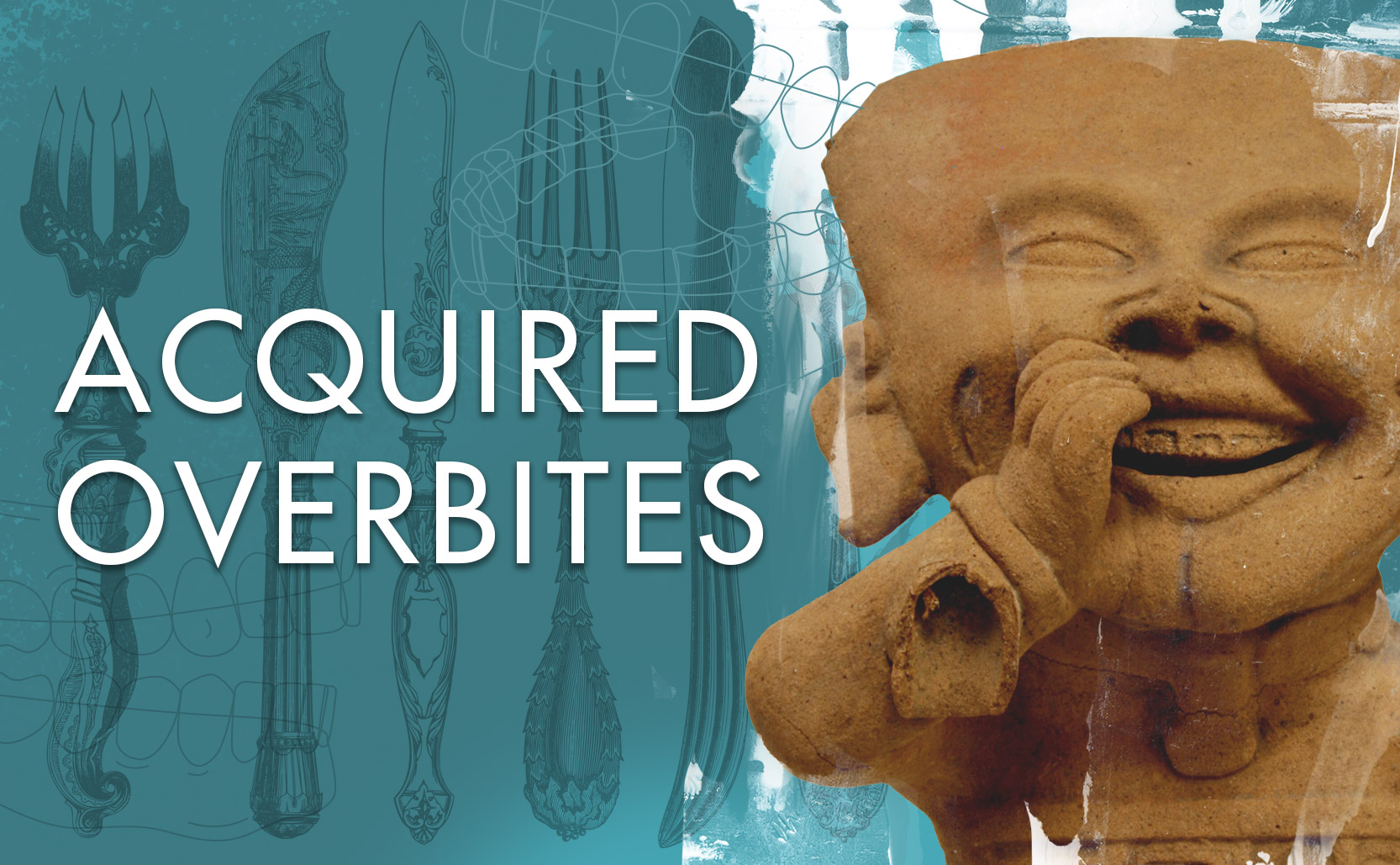Acquired Overbites
We have slight overbites because we use forks & knifes.
Before people ate with knives & forks they used their hands. In the absence of utensils people would have to clench and rip their food with their teeth. While crude, the result of all this pulling meant that people’s top and bottom rows of teeth lined up edge-to-edge. The introduction of utensils changed that.
The use of a knife & fork meant that a person no longer had to use their teeth to pull at their food, they could cut their food on their plate first. As a result anyone who used utensils (including us today) developed an overbite. Most of us have slight overbites where our top teeth hang out a bit in front of our bottom teeth, which comes from using utensils.
Bites over time
Looking at skulls we can see this effect across time, across cultures, and across social classes. Aristocrats could usually afford knives & forks before the peasantry, so they developed overbites before anyone else. For example, the more affluent members of 18th century Western Europe developed overbites before the people who couldn’t afford silverware. Further, the overbite took longer to develop in the American colonies, who were poorer than their countrymen back home in Europe.
In China the overbite developed as far back as 800 CE. Instead of knives & forks the Chinese aristocracy used chopsticks, but to eat meat with chopsticks the meat had to be pre-chopped as part of the meal preparation. As a result they didn’t have to pull at their food either and developed overbites centuries before Europeans.
Added info: forks took longer to be adopted by the English than other countries. By the late 16th century forks were still not in use by most Elizabethans. Those that did use a fork were seen as a bit foppish and showy, that they had been to Italy on the Grand Tour and wanted others to know it.


